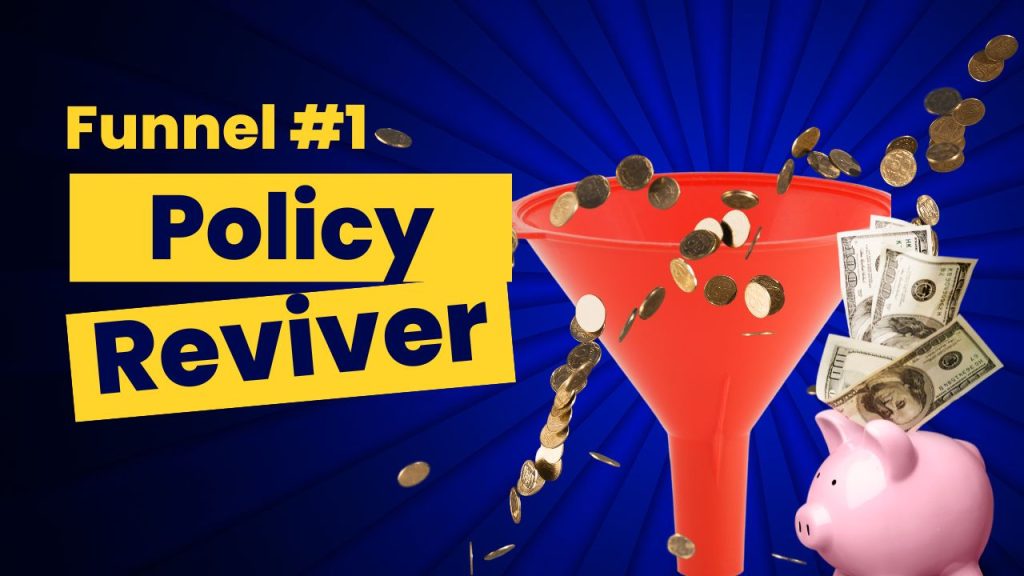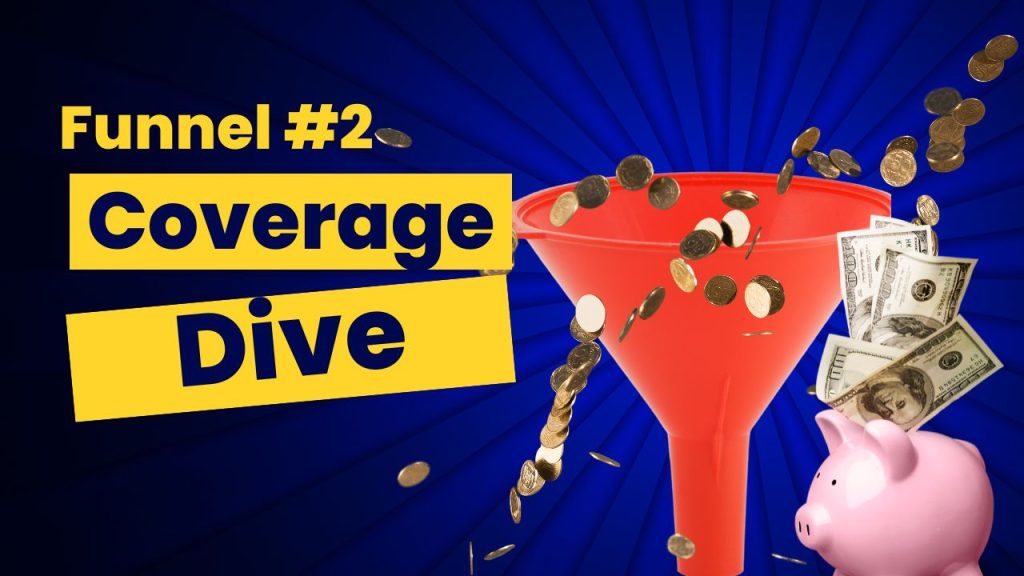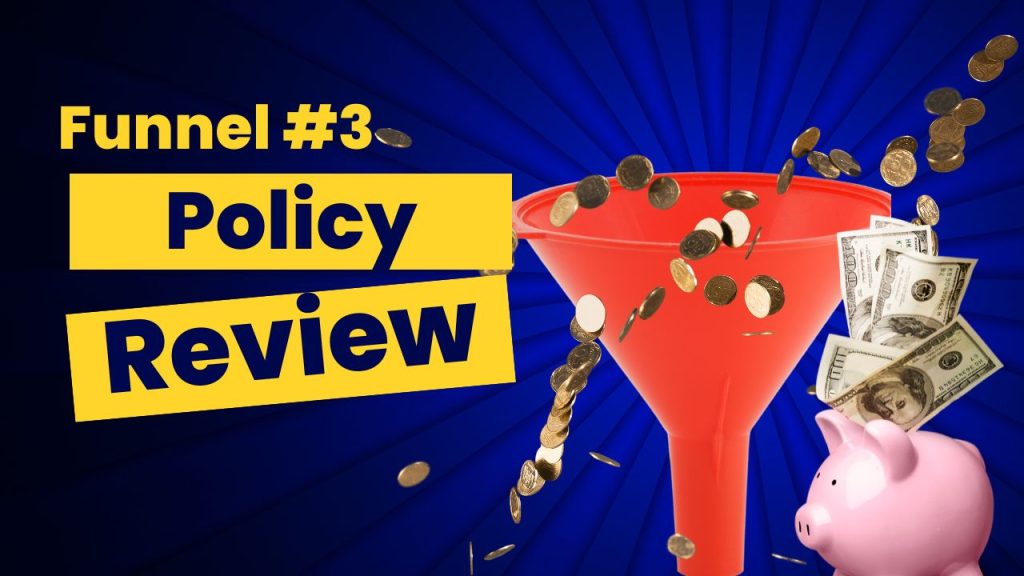Understanding and implementing effective marketing funnels for insurance agencies can be the difference between just staying afloat and truly thriving. As co-founder of TechMarketer, I’ve honed my focus on empowering insurance agencies, both personal and commercial lines, to not only capture leads but to nurture them into loyal clients. Yet, despite the clear advantages of a well-structured funnel, many agencies struggle with optimizing their marketing strategies, often due to limited resources or stringent regulatory environments.
In this article, we will dive into why marketing funnels are indispensable in today’s insurance sector, highlighting specific challenges faced by agencies. We’ll explore distinct funnel strategies designed for both personal and commercial lines, providing you with actionable insights to enhance client engagement, retention, and ultimately, profitability. From the simplicity of re-engaging personal line clients to the depth required in educating commercial line clients, each strategy is tailored to overcome common industry pitfalls, such as the overemphasis on acquiring new leads at the expense of nurturing existing ones.
By the end of this discussion, you’ll have a clearer understanding of how to apply these funnels effectively within your own agency, ensuring that every marketing dollar spent works harder for you. Let’s enhance your approach to marketing and see how these tailored strategies can transform your agency’s reach and impact in the insurance landscape.
The Basics of Marketing Funnels for Insurance
Understanding the structure and function of a marketing funnel is crucial for any insurance agency aiming to improve its client acquisition and retention rates. A marketing funnel maps out the journey a potential customer goes through, from first learning about your agency to finally making a purchase decision. This journey is typically segmented into several stages: awareness, interest, decision, and action.
Distinct Needs of Personal vs. Commercial Insurance Lines
The approach to marketing funnels can differ significantly between personal and commercial insurance lines due to their distinct target audiences and needs. Personal lines insurance, covering products like auto, home, and life insurance, often appeals to a broader demographic. The marketing here is geared towards creating a personal connection, addressing individual or family needs, and is generally straightforward in terms of policy understanding.
Conversely, commercial lines insurance deals with more complex products such as liability, property, and specialized industry coverage. The target audience here includes businesses and professionals who require a deeper understanding of how specific insurance policies can protect their operations and support their business goals. The marketing funnels for commercial lines need to focus more on education, detailed explanations of benefits, and tailored solutions.
Common Pitfalls in Insurance Marketing
One significant challenge in insurance marketing is the imbalance in funnel focus. Many agencies pour extensive resources into the top of the funnel — the awareness stage — hoping to attract as many leads as possible. While this is important, it often comes at the expense of the middle and bottom of the funnel, which involves engaging with and converting those leads into clients. This oversight can lead to high initial interest but low conversion rates, as potential clients do not receive enough attention or information to make an informed decision.
Additionally, both personal and commercial lines agencies often face difficulties in effectively segmenting their market and tailoring their communications to meet the specific needs of different customer groups. Without this segmentation, marketing efforts may be too general, failing to address the specific concerns or interests of potential clients, which diminishes the effectiveness of the entire funnel.
By understanding these foundational aspects and challenges of marketing funnels within the insurance industry, agencies can better plan and execute strategies that not only attract leads but also convert them into loyal customers. The next sections will detail practical funnel strategies tailored for personal and commercial lines, designed to maximize engagement and streamline the conversion process.
Funnel #1: The Policy Reviver Funnel (Personal Lines)

For personal lines insurance agencies, re-engagement of existing clients who may have become inactive or less responsive over time is a crucial strategy. The Policy Reviver Funnel is designed to reignite interest and encourage clients to revisit their current policies, potentially leading to policy adjustments or renewals.
Overview and Purpose
This funnel utilizes a sequence of targeted emails over a span of several days, aiming to address specific issues or changes that could affect a client’s insurance needs. By reminding clients of their potential vulnerabilities and the solutions your agency offers, this funnel moves beyond mere communication, pushing towards meaningful interaction that encourages clients to take action.
Step-by-Step Breakdown
Email 1: Problem Setup
Begin the sequence by identifying a common problem or a recent change in policy regulations that might affect the client. This email should outline the issue clearly and express your agency’s understanding and readiness to help resolve it.
Email 2: Agitation and Reminder
Use the second email to remind clients of the pain points associated with the issue. This could include potential risks, financial implications, or missed opportunities for savings or better coverage. The goal here is to stir a sense of urgency.
Email 3: Testimonial and Social Proof
Reinforce the message with a testimonial from a client who experienced similar issues and benefited from revisiting their policy. This email builds trust and shows the real-life value of staying proactive with insurance coverage.
Email 4: Educational Offer
Offer a resource, such as an eBook or a checklist, that educates them about their insurance options and how these can be tailored to their changing needs. This positions your agency as a helpful and expert resource.
Email 5: Final Call and Self-Segmentation
Conclude with a strong call to action, inviting them to a personalized policy review session. This email should also include an option for the client to indicate their current insurance concerns, allowing them to self-segment and enabling you to tailor follow-up communications more effectively.
Tips for Personalizing and Automating the Funnel
- Segmentation: Use client data to segment your email list based on policy type, client history, or demographic information. This allows for more personalized and relevant communication.
- Automation: Set up automated email triggers based on client interactions, such as opening an email or downloading a resource. This ensures timely follow-ups and maintains engagement without manual intervention.
- Dynamic Content: Incorporate dynamic content in emails that adjusts based on the client’s profile or previous interactions. This could include personalized policy recommendations or updates relevant to their location or lifestyle.
By revitalizing connections with existing clients through the Policy Reviver Funnel, personal lines agencies can not only increase retention rates but also uncover opportunities for policy upgrades or additional coverage, enhancing client satisfaction and agency revenue.
Funnel #2: The Commercial Coverage Deep Dive Funnel (Commercial Lines)

Commercial insurance clients require detailed and specific information to navigate their coverage options effectively. The Commercial Coverage Deep Dive Funnel focuses on educating these clients about various insurance products, helping them understand how these coverages align with their business operations and risk management strategies.
Objective and Structure
This funnel is designed to build on the foundational knowledge of clients about commercial insurance, deepening their understanding and guiding them towards making informed coverage decisions. It combines educational content, strategic engagements, and personalized consultations to foster trust and strengthen client relationships.
Detailed Funnel Steps
Email 1 (Introduction to Coverage Details)
Kick off the funnel with an email that introduces a specific aspect of commercial insurance that is relevant to the client’s industry. This could involve changes in legal requirements, emerging risks, or commonly overlooked areas of coverage.
Email 2 (Downloadable Deep Dive Resource)
Follow up with a detailed guide or white paper that delves deeper into the chosen coverage area. This document should be comprehensive, discussing case studies, coverage benefits, and potential pitfalls of being underinsured.
Email 3 (Case Studies and Real-World Applications)
Send an email featuring case studies that highlight how similar businesses have successfully managed risks with the right coverage. This helps to illustrate the practical value of thorough insurance planning.
Email 4 (Experience Mod Review)
Offer personalized, one-on-one Experience Mod review sessions. These clinics can help clients understand how their Experience Mod is calculated, the impact of claims on their mod rate, and what they can do to improve it. By offering these private reviews, you provide direct value that can lead to immediate cost savings for your clients.
Email 5 (Personal Consultation Offer)
Conclude the sequence with a strong call to action for a free, one-on-one consultation with an insurance specialist. This is an opportunity for clients to discuss their specific needs and how your agency can help tailor their coverages.
Incorporating Facebook Custom Audiences
- Add Prospects to a Custom Audience: Utilize the contact information gathered during the email interactions to add prospects to a custom audience in Facebook Business Manager. This targeted audience will receive ads that are highly relevant to the stage of the funnel they are currently in.
- Running Targeted Ads: Launch Facebook ads that showcase testimonials from satisfied clients, informational content, and reminders about the ongoing email series. These ads should reinforce the messages sent via email and encourage further engagement with your agency’s resources.
- Content Ads for Education: Specifically, run content ads that highlight key takeaways from the downloadable resources or snippets from the webinar. This not only increases the visibility of your educational content but also enhances the perceived value of engaging with your agency.
Tips for Execution and Engagement
- Tracking and Analytics: Use Facebook and your email marketing platform’s built-in analytics to track interactions, engagement rates, and conversions. This data will help you refine your ads and email content to better meet the needs of your audience.
- A/B Testing: Regularly test different versions of your emails and ads to determine which messages, formats, and calls to action generate the best results.
- Continuous Feedback Loop: Encourage feedback during the webinar and consultation stages to understand client concerns and preferences, allowing for further personalization and improvement of the funnel.
By integrating educational content, personalized interactions, and strategic use of Facebook advertising, the Commercial Coverage Deep Dive Funnel not only educates clients but also actively engages them, enhancing their journey towards making well-informed insurance decisions.
Funnel #3: The Strategic Policy Review Funnel (Commercial Lines)

In the complex world of commercial insurance, staying up-to-date with the latest coverage needs and regulations is crucial for businesses. The Strategic Policy Review Funnel is crafted to engage clients in a meaningful review of their existing policies, ensuring their coverage meets current business requirements and legal standards. This funnel fosters a proactive approach to policy management and client retention by providing genuine value through expert guidance.
Objective and Steps
The goal of this funnel is to encourage businesses to reassess their insurance needs periodically with the help of expert insights, ensuring their coverage continues to protect them adequately as their business evolves.
Email 1 (Policy Review Invitation)
Begin the funnel with an email that highlights the importance of regular policy reviews, especially in light of any recent industry changes or business growth. Offer a complimentary policy review session as a direct benefit to taking prompt action.
Email 2 (Educational Content on Recent Changes)
Send a follow-up email that details recent changes in the insurance landscape that could impact their business, such as new regulations, emerging risks, or common claim issues within their industry. This email should underscore the risks of non-compliance or inadequate coverage.
Email 3 (Customized Risk Reduction Plans)
Based on the findings from the Policy Review, offer to develop customized risk reduction plans. These plans could include detailed strategies for improving safety protocols, reducing claims, and training employees on new safety measures, all aimed at improving their Experience Mod score.
Email 4 (Personalized Consultation Reminder)
As the funnel progresses, remind the client of the personalized consultation offer. Emphasize the tailored nature of this service, focusing on how it’s designed to align their insurance policies with their current and future business needs.
Email 5 (Last Opportunity Call)
Send a final reminder about the policy review session, stressing the closing window to take advantage of this offer. Highlight the direct benefits of acting now, such as peace of mind, potential cost savings, and optimized coverage.
Leveraging Facebook Custom Audiences
- Segmentation and Targeted Advertising: Utilize the client data from the email interactions to segment your audience on Facebook. This segmentation allows for the creation of tailored ads that speak directly to the specific needs and interests of each segment.
- Running Relevant Ads: Implement ads that echo the content of the emails—focusing on the importance of policy reviews, changes in industry standards, and the benefits of updating coverage. These ads serve to reinforce the email content and keep your agency top of mind.
- Engagement Boosts through Content Sharing: Share content that complements the email messages, such as blog posts or short videos explaining common insurance queries or recent changes in regulations. This strategy helps maintain engagement and positions your agency as a go-to resource for insurance knowledge.
Tips for Enhancing Client Engagement
- Interactive Elements: Include interactive elements like surveys or polls in your emails to gather insights about the client’s current satisfaction with their policies or their interest in specific coverage areas. This feedback can guide the personal consultation, making it even more relevant and effective.
- Follow-Up Strategies: Implement a follow-up strategy post-consultation to keep the dialogue going. This could involve sending a customized summary of the consultation along with next steps or additional resources.
- Referral Encouragements: Encourage satisfied clients to refer others. You’ll never get a referral if you don’t ask. This not only extends your reach but also leverages satisfied clients as brand ambassadors.
This Strategic Policy Review Funnel not only addresses the immediate needs of commercial clients regarding their policy management but also enhances their engagement with your agency, establishing a foundation for long-term client relationships and continuous business growth.
Measuring Success and Optimizing Funnels
To ensure that marketing funnels are not just operational but also effective, insurance agencies need to establish metrics for success and continuously optimize their strategies based on data-driven insights. This section discusses key performance indicators (KPIs), testing methods, and optimization techniques that agencies can employ to refine their marketing funnels and enhance their overall marketing ROI.
Key Metrics to Track
Tracking the right metrics allows you to assess the effectiveness of each funnel stage and identify areas for improvement. Here are some critical KPIs for insurance marketing funnels:
- Conversion Rates: Track the percentage of leads that move from one stage of the funnel to the next, and ultimately convert into paying customers. This helps identify where leads are dropping off and what stages need refinement.
- Engagement Rates: Measure how engaged your audience is with your emails and content. Metrics like open rates, click-through rates, and time spent on your website are indicators of how compelling and relevant your messaging is.
- Cost Per Acquisition (CPA): Calculate the total cost of acquiring a customer. This includes all marketing expenditures divided by the number of customers acquired through the marketing efforts. Keeping this number low while maintaining quality leads is crucial for profitability.
- Customer Lifetime Value (CLV): Understand the total value a customer brings over their relationship with your agency. A high CLV relative to CPA indicates a healthy return on investment.
- Retention Rates: Especially important for insurance agencies, tracking how many customers renew their policies or purchase additional products can indicate customer satisfaction and the effectiveness of retention strategies.
Techniques for A/B Testing
A/B testing is crucial for optimizing marketing funnels. Here are some practical ways to implement A/B testing in your marketing efforts:
- Email Subject Lines: Test different subject lines to see which ones yield higher open rates. This can indicate what language or topics resonate best with your audience.
- Call-to-Action (CTA) Buttons: Experiment with different colors, positions on the page, and wording to determine which combinations drive the most conversions.
- Landing Pages: Create two versions of a landing page with different layouts, images, or content to see which one performs better in terms of keeping visitors engaged and driving conversions.
- Content Types: Test different formats such as blogs, videos, and infographics to see which types are most effective at educating clients and prompting them to take action.
Continuous Improvement of Funnel Strategies
Optimizing a marketing funnel is an ongoing process. Here’s how you can continuously improve your funnel strategies:
- Collect and Analyze Feedback: Regularly gather feedback from clients through surveys, direct feedback, or social media listening. Use this information to make adjustments to your content and strategies.
- Monitor Industry Trends: Stay updated on changes in the insurance industry and marketing technology. Adapting your strategies to include new best practices or tools can keep your funnels relevant and effective.
- Iterative Refinements: Use the insights gathered from metrics and tests to make small, continuous improvements in your funnels. Even minor changes can lead to significant enhancements in performance over time.
- Training and Development: Ensure your marketing team is well-trained in the latest digital marketing strategies and tools. Regular training sessions can help your team stay at the cutting edge of marketing innovations.
By rigorously measuring, testing, and optimizing your marketing funnels, you can ensure they remain effective tools for generating leads, converting clients, and building long-term relationships in the competitive insurance market.
When approaching insurance marketing, having a strategic approach to customer acquisition and retention through well-structured marketing funnels is more crucial than ever. Throughout this article, we’ve explored various funnel strategies designed for both personal and commercial lines, emphasizing the importance of education, engagement, and ongoing optimization. By implementing the Policy Reviver Funnel, the Commercial Coverage Deep Dive Funnel, and the Strategic Policy Review Funnel, insurance agencies can not only enhance their client interactions but also significantly improve their conversion rates and overall market effectiveness.
Effective marketing in the insurance sector requires a balance between technological advancements and personalized customer experiences. By leveraging tools for automation, analytics, and digital engagement, agencies can deliver targeted, relevant content that resonates with both potential and existing clients. Furthermore, continuously measuring and refining your strategies based on solid data and client feedback ensures that your marketing efforts remain aligned with client needs and industry standards.
However, knowing where to start or how to improve existing marketing tactics can often be challenging. If you’re looking to enhance your insurance agency’s marketing strategies but are unsure of the next steps, I invite you to book a call with us. At TechMarketer, we specialize in creating customized marketing and automation solutions that cater specifically to the nuances of your agency. Whether you’re looking to optimize your current funnels, integrate new technologies, or overhaul your insurance marketing strategy, we’re here to help guide you through every step of the process.
Don’t let the potential of your marketing efforts go untapped. Book a call with me today, and let’s discuss how we can elevate your insurance agency’s marketing to effectively reach and convert your target audience, maximizing your ROI and securing long-term client relationships.
By taking proactive steps to refine your marketing funnels and embracing a data-driven approach, you can ensure that your agency not only survives but thrives in today’s competitive market. Let’s work together to turn your marketing challenges into opportunities for growth and success.
